
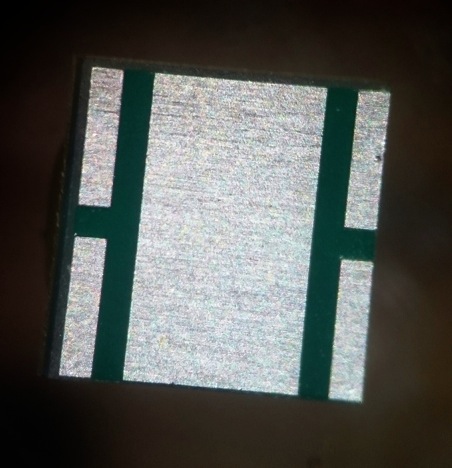
A new generation of XHP50 from Cree, they called it XHP50.2 . The appearance of the led is in line with several other recently updated Cree leds, with rougher phosfor layer that is applied differently. Let's test it.
I bought two XHP50.2 leds from Kaidomain, of which the J4 3A bin is tested here, so a neutral 5000K tint. The J4 output bin is the highest bin in the datasheet, both for XHP50 and XHP50.2, but at this moment Cutter sells XHP50.2 leds in K2 bin (as often happens with Cree leds: higher bins are for sale than are in the datasheet) I hope that KD has their bins correct.
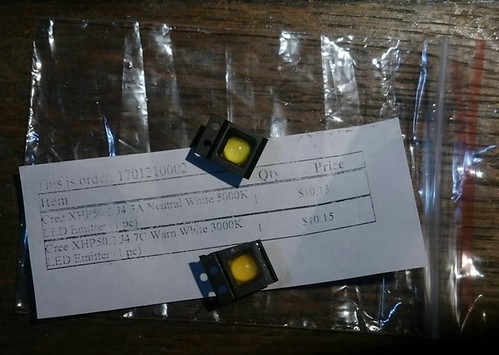
The led was reflowed on a 20mm KD-Light copper DTP board (6V configuration), so not my usual 16mm Noctigon, but in my tests I (and relic38 in his tests) never found significant differences between the various DTP boards around.
When a low 0.5mA current is applied to the led it immediately shows the new construction: the dies much closer together than the XHP50, and no dark cross. so the build is similar to the XHP35, which does not suffer from donut holes. Also the rough phosfor layer can be seen, so probably no dedoming for this led!
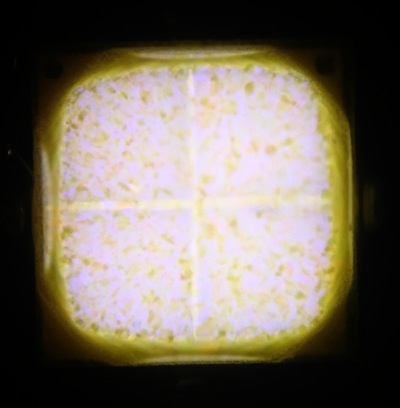
I checked the beam at 50mA with a smooth C8 reflector and a light OP C8 reflector on top of the led, and indeed the beam is nice with a good hotspot without donut hole, something you never got away with with the last generation XHP50 :-) . I think the led was not very well focussed inside the smooth reflector because the OP reflector actually shows a tighter beam. Left smooth, right OP, pictures under-exposed to show the hotspot shape well.
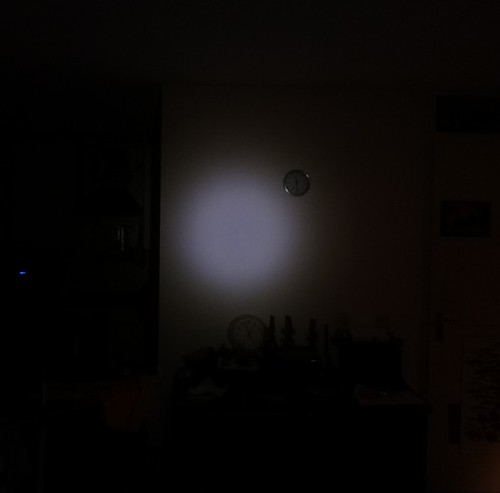

The output test was done like all my more recent emitter tests. I described it in detail in my XP-L test. , with two minor differences that should not matter significantly for the results: I used my Integrating sphere no. II instead of no. I, and for the current I used a clamp meter, which appears to measure 0.1A lower than the power supply current-reading that I used before.
In summary: 1) just one led was tested, reflowed on a DTP copper board (KD-light 20mm) 2) I used my large version II integrating sphere with high quality luxmeter, 3) the output numbers and voltages were measured with the led close to 'steady state' for each current, so warmed up and settled, you should be able to get these numbers in a well heatsinked flashlight. Mind that these are output numbers of the bare led, in a flashlight there will be losses from light obstructions, lens and optic, 4) output is in 'djozz-lumen' defined as 1/550 of the output of my Sunwayman D40A on high setting, which I hope is close to the real lumen, but at least is consistent over all my emitter tests done in integrating spheres.
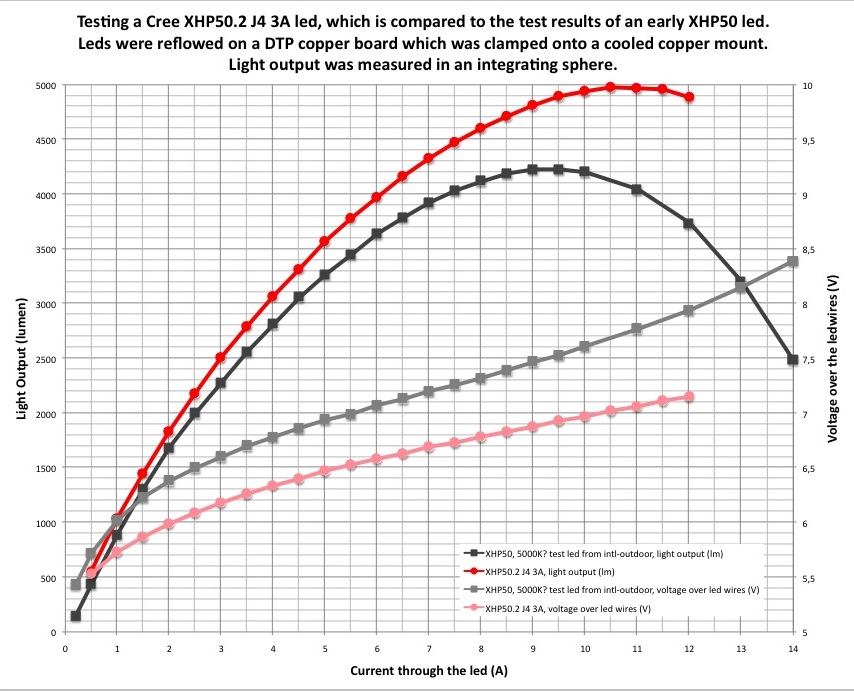
What can be seen:
-the output of this J4 bin XHP50.2 led is not all that better than that early XHP50 led that I tested in november 2015. That led did not come with a bin, but it can't have been the best bin that the XHP50 comes in at present.
-But it has its maximum at higher current: 10.5A, compared to 9A for the XHP50. So the thermal resistence seems to have lowered a bit (even though the specsheet does not show a different number: 1.2 degC/W for both XHP50 and XHP50.2). This is a tougher led!
-The voltage is significantly lower, by 0.5V at currents that matter (for perspective: this compares to 0.25V for single die leds). This lower voltage not only implies that it will draw more current in a direct drive situation (this led is dangerous direct drive with two li-ions in series!!!), it is also more efficient because of it.
Conclusion:
This XHP50.2 led is a real upgrade compared to the XHP50 led, not necessarily for the higher output (unfortunately I have not been able to compare leds with 'certified' correct bins), but it has a significant lower voltage which makes the led more efficient. It is also tougher at really high currents. But perhaps the most significant improvement is the absence of the black cross in the output profile, this led can be used in smooth reflectors without problems.
Now see if I can think of a nice mod with this led, I purposely did not test it to death for that (I checked the led after the test, it only lost 1% output from the abuse).
Thanks for reading! :-)
 (stereo picture)
(stereo picture)